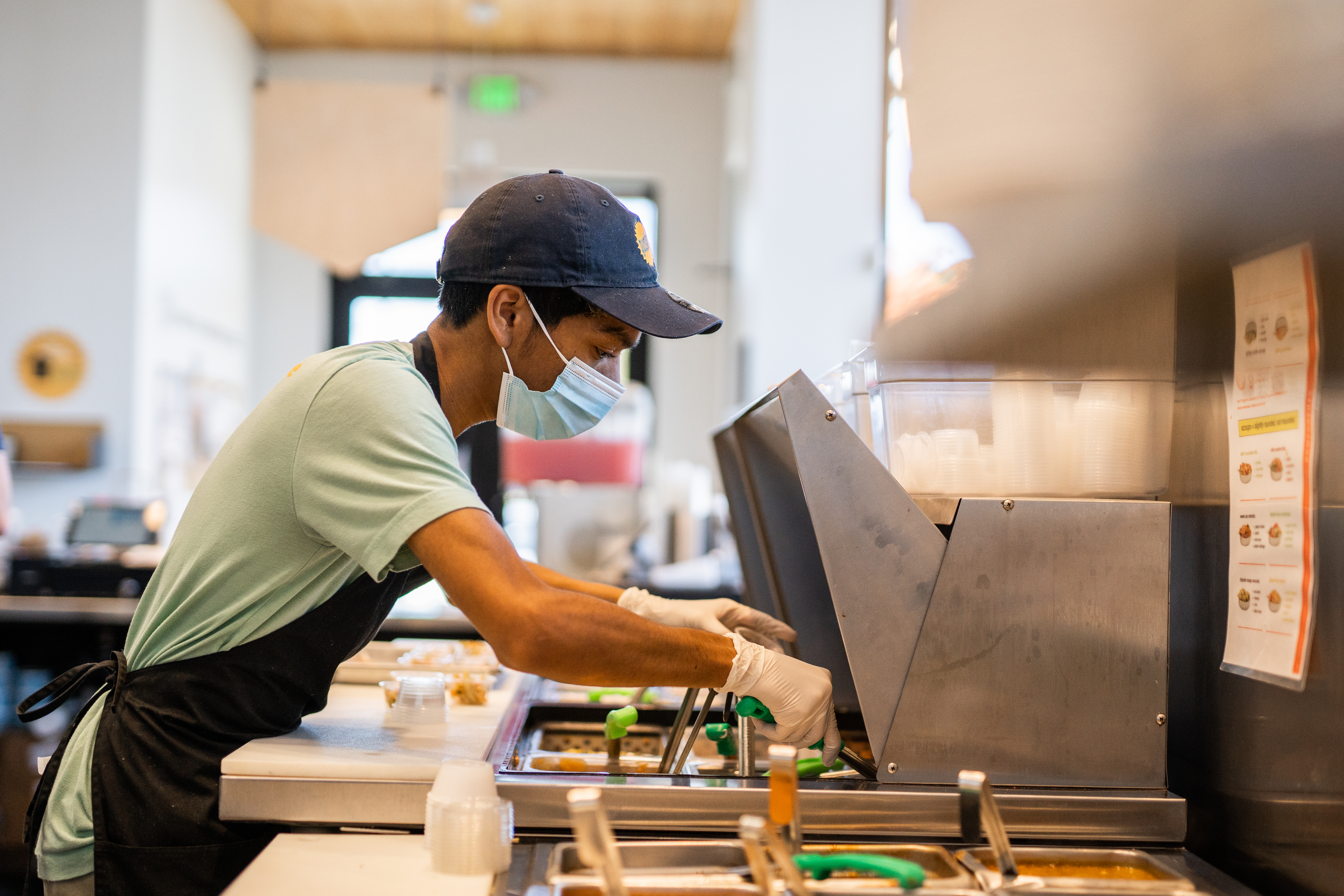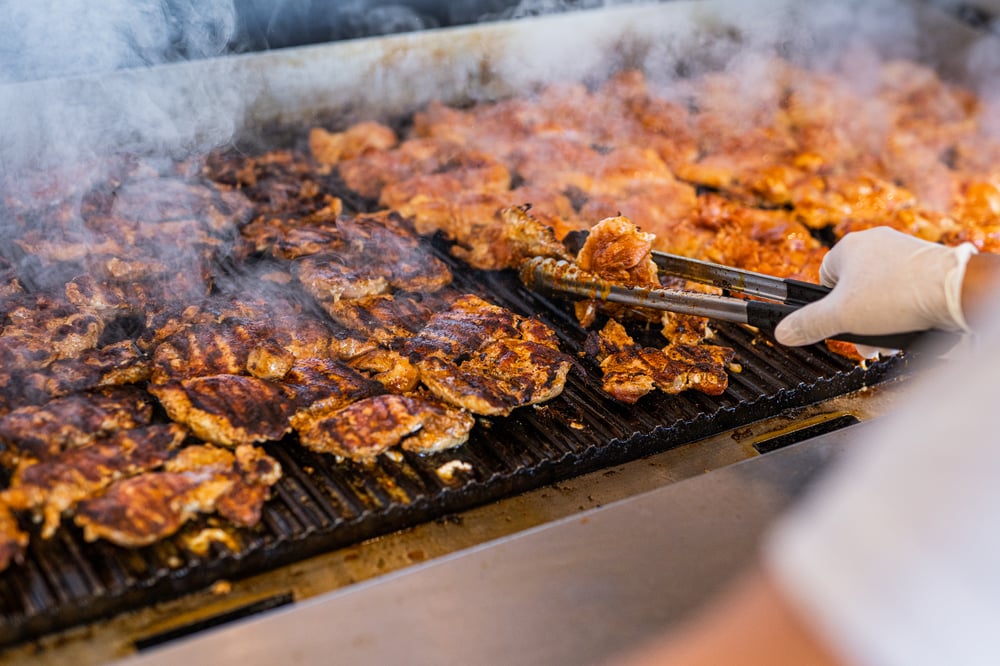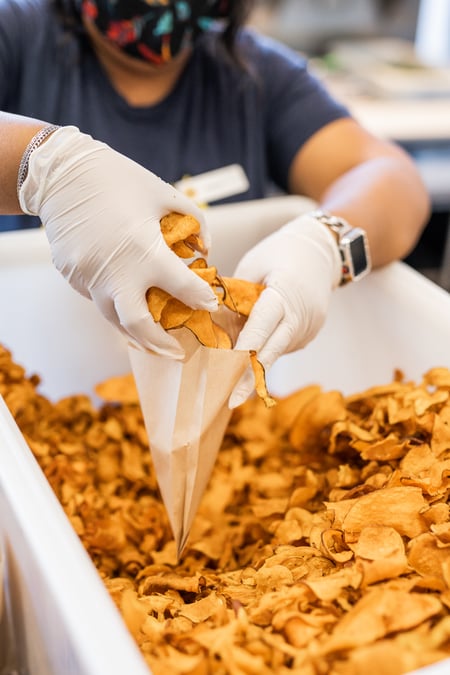Call Sales: +1 (833) 437-3835
Call Sales: +1 (833) 437-3835
Coral Drake | September 21, 2022 |

If you're like most Americans, you consumed a fair amount of delivery and takeout during the past couple of years. After all, the pandemic shook up how we eat, among other things. Did you know that some restaurants are permanently catering to consumers who are exclusively ordering in?
Virtual kitchens are popping up everywhere to take advantage of the demand for delivery and takeout, and they're likely here to stay. Here's what you need to know about virtual kitchens and how they’re changing how we eat.
Virtual kitchens, sometimes called ghost kitchens, offer menus that are indistinguishable from those of brick-and-mortar restaurants. What sets them apart from kitchens in traditional restaurants is that they only supply food for delivery and takeout orders. Some don't even have takeout, focusing on delivery-only options instead.
The experience for the customer is very similar to ordering out from any restaurant. Diners can place their order by calling in, ordering online, or using a third-party delivery app. The only difference is that they never sit in at the restaurant like they would in a traditional restaurant.
Dark kitchens are yet another name for ghost kitchens. Ghost kitchen owners can rent kitchen space that is perfectly equipped for their needs and entirely up to code for much less than it would cost to rent space at a traditional restaurant.
Restaurant owners can rent space on a month-to-month basis instead of signing a long contract, enabling some flexibility in case things don't go as planned. In some cases, the dark kitchen owner also provides marketing and other essential services for dark kitchens.
Delivery is more popular than ever. Many people are getting a majority of everyday goods, food, and even clothing delivered to their door. It should come as no surprise that virtual dining concepts are taking off as well. As virtual brands increase in popularity, restaurants are recognizing an opening that just wasn’t there in the past.
For any restaurant thinking about moving into virtual dining, the Covid pandemic may have been the push they needed. The National Restaurant Association estimates that as many as 90,000 restaurants closed during the pandemic. While some of those restaurants did re-open, many didn't.
The restaurants that were able to stay open during the pandemic largely turned to some version of a virtual restaurant. Many restaurants trained servers and bartenders to be delivery drivers. Others let go of their waiting staff and relied on an app service for delivery.
It's likely more than just the pandemic that is responsible for the rise of restaurants offering only delivery and takeout. In many cases, the demand was already there, waiting for restaurants to catch onto the emerging trend. Ghost kitchens fill an operational gap in the marketplace, even as dine-in options are free to open their doors again. The success of these kitchens correlates directly with changes in consumer and restaurant owner behavior.

Over half of adults said that purchasing takeout or delivery was “essential to the way they live” in a 2020 survey. This dependence on ordering in is unlikely to go away entirely as restaurants open their dining areas again.
The pandemic and evolving cultural norms have resulted in a permanent change in the way we eat. Many people have grown accustomed to the comfort of enjoying favorite foods in their own home. The range of restaurants available at the push of a button from delivery apps have eliminated the need to order only from restaurants that are right around the corner. Consumers are increasingly experimenting with options on the other side of town instead.
Today's consumer has a greater level of trust for all kinds of products offered from companies without brick-and-mortar locations. Consumers who are accustomed to ordering most of their retail purchases and even their groceries online don't bat an eye at a restaurant that doesn't have a brick-and-mortar location. This is likely an important part of why virtual dining concepts are enjoying continued relevance.
As virtual kitchens become more popular and readily available, they are likely to continue to fuel consumer demand for delivery and takeout options. Consumers are increasingly accustomed to having a huge range of order-in choices. As more and more of consumers’ favorite restaurants are ghost kitchens with only takeout or delivery only options, virtual dining will become even more entrenched in our society.
Owning and operating a restaurant has never been easy. Keeping a kitchen and dining area open and full enough to avoid going under is a challenge significant enough to keep many would-be restaurant owners out of the industry.
Working in a traditional restaurant also has some disadvantages for employees that can be resolved with ghost kitchens. The advantages of virtual dining for restaurants and the people who work in them are a significant contributor to why this kind of restaurant is becoming so popular:
You can start a virtual kitchen much more affordably then you can start a traditional restaurant. A virtual restaurant doesn't need to be in a great location to attract customers or draw in pedestrians. It doesn't need to be nearly as big either. All you need is enough room for the kitchen, which means that finding an affordable location for your ghost kitchen and getting the business up and running is a lot cheaper and easier.
To keep a ghost kitchen up, running, and making money, all you need are a kitchen, a couple of chefs, and a dishwasher or two. You won’t need to hire any servers, bartenders, hosts, or other staff to handle the customers.
You can rely on third-party partners to handle delivery services for you. In fact, being on third-party delivery apps is advantageous since they draw in customers scrolling through restaurants on their platforms.
Virtual restaurants are today's food trucks. If you're not sure whether a restaurant concept will be successful, trying it out first as a ghost kitchen makes a lot of sense. You can see whether the concept attracts customers, tweak the menu, and play with your brand, all before you commit to a full-on restaurant space. A virtual kitchen is a superb way to get to know your market and experiment as much as you like, long before you take the plunge into opening a dine-in restaurant.

Restaurants have historically had some of the lowest profit margins of any business. Even restaurants that do very well often only have profitability between 5-10%. This is because the cost of food and labor absorbs as much as 65% of revenue.
When you consider costs for rent, marketing, and other factors, in addition to paying for food and labor, it's clear why it's difficult to make money in the restaurant business. There's not much that can be done about the cost of food, but utilizing a delivery and takeout-only model is an excellent way to reduce costs for staff and rent. Virtual kitchens can, therefore, maintain significantly higher profit margins for the same amount of income.
Managing or working at a traditional restaurant is a stressful job. Keeping the dining area looking nice and tidy, handling customers, and juggling eat-in, take-out, and delivery orders is enough to create a high turnover rate for any restaurant.
However, virtual restaurants eliminate a lot of these stressors. Chefs can focus on getting the food made, packaging it, and sending it on its way without worrying about anything else going on in the restaurant. Because all the staff you need to hire are good chefs and some cleanup crew, you won't have to worry about as much turnover as in traditional restaurants either.
Virtual kitchens are able to operate with lower costs, which often means they can pass the savings on to the consumer. Customers can get quality food at a much lower price than from a similar restaurant offering dine-in options.
Customers can also find a wider variety of restaurants with menu offerings you're not going to find anywhere else. As more and more consumers are becoming accustomed to innovative delivery and takeout options, restaurants are finding that ghost kitchens are the best way to meet customer needs.
Owning a restaurant is often fraught with anxiety. While many restaurant owners are passionate about what they do, sometimes it can feel like keeping up with expenses and maintaining enough of a profit margin to keep the doors open takes all of the joy out of it.
Virtual kitchens are an innovative way for restaurants to serve customers great food while eliminating many of the issues of traditional restaurants. Whether you're considering opening up a restaurant for the first time or you already have a successful individual store or chain, you may want to consider looking into virtual dining concepts. It may be hard to believe that restaurants can not only survive but thrive without a dining area, but virtual restaurants are proving that they're here to stay.